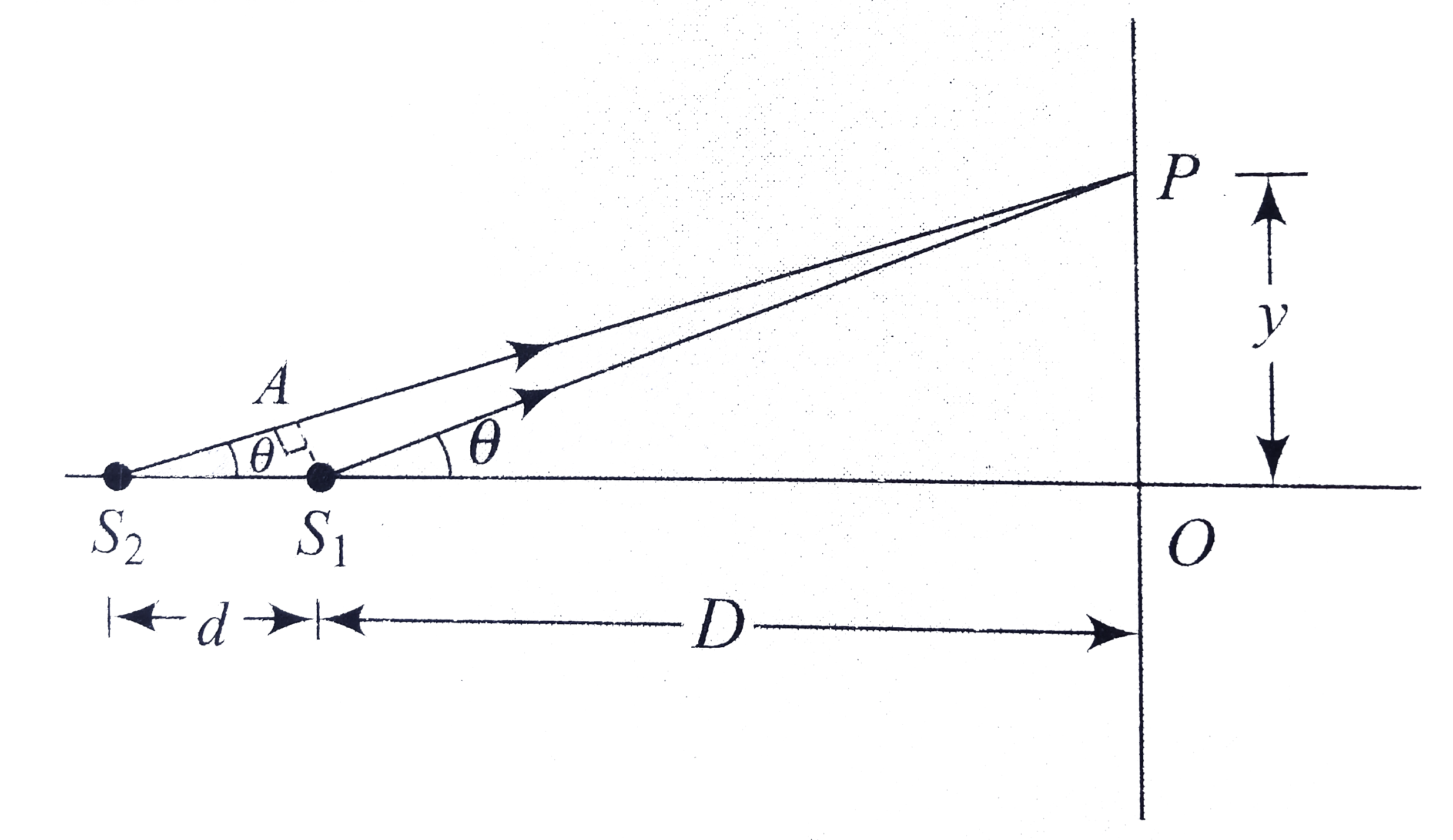(a) In Illustration 2.20, how many dark rings will be observed on the wall? (b) What is the Path difference at point P?

Text Solution
(a) Path difference corresponding to minima in our given range is λ/2,3λ/2,5λ/2.
Hence, three dark rings will be observed on the wall.
(b) Path difference between the waves reaching at P,
from Fig. 2.20 Δx=S2A
S2P−S1P=Δxordcosθ=Δx
cosθ=Δxd
But tanθ=yD
⇒cosθ=√D2−Y2D
D√1−y2D2D
=(1−y2D2)1/2=(1−Y22D2)
From (i) Δx=dcosθ=d(1−y22D2)
From (i) and (ii), we can find the radius of any dark of bright ring.
|
Topper's Solved these Questions
- WAVE OPTICSBOOK - CENGAGE PHYSICSCHAPTER - WAVE OPTICSEXERCISE - Solved Examples
10 Videos
- WAVE OPTICSBOOK - CENGAGE PHYSICSCHAPTER - WAVE OPTICSEXERCISE - Exercise 2.1
12 Videos
- THERMODYNAMICSBOOK - CENGAGE PHYSICSCHAPTER - THERMODYNAMICSEXERCISE - QUESTION BANK
34 Videos
- WAVESBOOK - CENGAGE PHYSICSCHAPTER - WAVESEXERCISE - QUESTION BANK
38 Videos
Similar Questions
In how many ways 6 rings of different type can be had in 4 fingers?
View SolutionIn a thin film between two points A and B, eight fringes are observed with light of wavelength 5461 Å. How many fringes will be observed between the same two points A and B if the wavelength of the light used is 6500 Å.
View Solution
Knowledge Check
Two coherent sources A and B of wavelenth 6×10−5cm produce interference at ann arbitrary observation point P.
what is the path difference BP-AP if the point P is at a dark band between the third and forth order maxima?A2.1×10−2cmB2.1×10−4cmC4.2×x10−4cmD4.2×10−3cmIn how many ways 4 rings of different types can be worn in 3 fingers ?
A49B12C24D81In how many ways 4 rings of different types can be worn in 3 fingers ?
Aa. 49Bb. 12Cc. 24Dd. 81
In how many ways can 7 rings of different type be had in 4 fingers ?
View SolutionIn how many ways 6 rings of different types can be had in 4 given fingers of a hand?
View SolutionIn how many ways 5 rings of different types can be worn in 4 fingers?
View SolutionIn how many ways 6 rings of different types can be worn in 4 fingers?
View SolutionIn how many ways 5 rings of different types can be worn in 4 fingers?
View Solution
